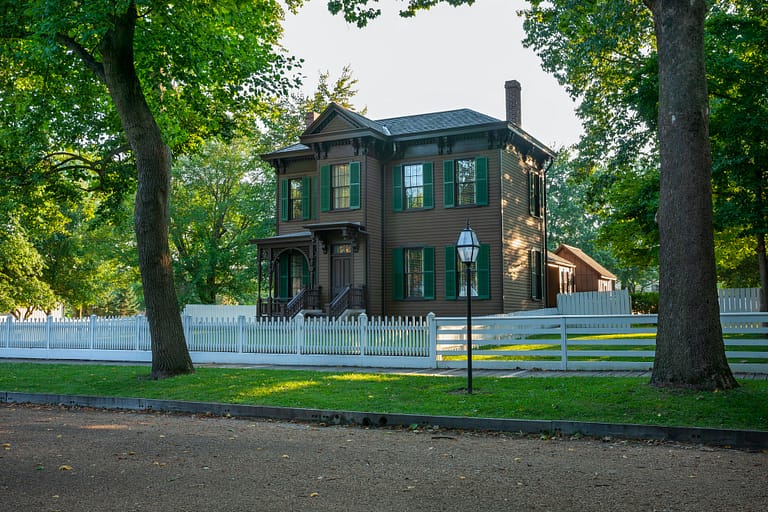Historic Dallas Renovations
If you're wondering whether old homes can become modern marvels, Historic Dallas Renovations has the answer. This company, led by industry expert Ron Siebler, specializes in residential remodeling and historic preservation.
They are dedicated to bringing new life to old spaces and making your vision a reality. Whether it's a kitchen and bath remodel or ecclesiastical renovations, they have the expertise to handle it all.
Historic Dallas Renovations is passionate about preserving the past and committed to ensuring your satisfaction. If you have a historic property, they hold the key to unlocking its full potential.
Key Takeaways
If you're wondering if old homes can be transformed into modern spaces, Historic Dallas Renovations has the answer. This company, led by industry expert Ron Siebler, specializes in remodeling residential properties and preserving historic homes.
They are committed to revitalizing old spaces and bringing your vision to life. Whether it's renovating kitchens and bathrooms or restoring historic buildings, they have the expertise to handle it all.
Historic Dallas Renovations is passionate about preserving the past and ensuring your satisfaction. If you own a historic property, they have the expertise to unlock its full potential.
Historic Property Considerations
When you renovate historic properties, it's crucial to consider the preservation guidelines and regulations. Balancing the historical integrity of these buildings with modern comforts is a challenge. You need to integrate contemporary elements while preserving the unique character of historic buildings. Understanding historic preservation is essential as it involves navigating specific regulations for compliance.
To successfully undertake historic preservation projects, you must be well-versed in conserving and restoring these architectural treasures. By embracing the rich history and architectural significance of these buildings, you can create a harmonious blend of old and new that resonates with both the past and the present.
Next, let's explore the specific Dallas renovation regulations that are integral to this process.
Dallas Renovation Regulations
When renovating in Dallas, it's important to understand the zoning restrictions and the permit and approval process. This understanding is crucial to ensure that your renovation project complies with the city's requirements.
Navigating these regulations carefully is essential to avoid potential setbacks in your renovation efforts.
Zoning Restrictions for Renovations
When dealing with renovation zoning restrictions in Dallas, it's essential to carefully review the City of Dallas Preservation Documents. These guidelines play a crucial role in ensuring compliance with zoning restrictions, especially when renovating historic homes. The regulations outlined in the City of Dallas Preservation Documents, such as the Certificate of Appropriateness and the Historic Preservation Ordinance, are designed to maintain the authentic architectural style of historic properties. Additionally, the City of Dallas Landmarks map and districts serve as a visual reference for the specific areas subject to these zoning restrictions for renovations. Understanding and adhering to these regulations is vital for preserving the historical integrity of Dallas' neighborhoods. Below is a summary table of key zoning restrictions for renovations in Dallas:
| Zoning Restrictions for Renovations |
|---|
| Review City of Dallas Preservation Documents |
| Understand Certificate of Appropriateness |
| Consider Historic Preservation Ordinance |
| Refer to City of Dallas Landmarks map |
| Comply with regulations for historic authenticity |
It's important to keep these regulations in mind when planning any renovation projects in Dallas.
Permits and Approval Process
If you're planning a historic renovation project in Dallas, you'll need to obtain permits and approval by following the city's regulations. These rules are in place to preserve the city's architectural heritage.
Getting the necessary permits is crucial for maintaining the authenticity and historical significance of the properties. It's essential to understand the specific requirements and documentation needed for your renovation project. By adhering to Dallas renovation regulations, you play a part in preserving the city's unique architectural identity.
Once you've navigated the permits and approval process, the next step is to assess the architectural style of the property to ensure that the renovations align with the building's historical significance.
Architectural Style Assessment
When evaluating the architectural style of historical homes in Dallas, it's important to look for distinctive features that represent the era and design.
Balancing preservation and modernization is key, as it allows you to maintain the historical significance while integrating modern functionality.
This thoughtful approach ensures that the renovated space respects the past while meeting present-day needs.
Influential Architectural Features
The historic Dallas renovations preserved and restored classic design elements. The focus was on maintaining the home's historic integrity by showcasing features like coffered ceilings, original moldings, and traditional layouts.
Custom-designed elements, such as the swinging door and kitchen layout, were incorporated to reflect the formal dining room's traditional style.
The guest bedroom was transformed into a masculine office suite, honoring the home's heritage with the installation of a coffered ceiling and textured woven wallpaper.
Additionally, a glass encasement and heated tile floor were added to the sun porch, creating a serene space for reflection that aligned with the classic architecture.
Performance fabrics and classic furniture pieces adorned the living room and formal living room, enhancing sophistication while preserving historic charm in the home.
Preservation and Modernization
When you consider the architectural style, you'll see that blending classic design elements with modern amenities is crucial for respecting the historical integrity of a property while meeting the needs of modern living.
When evaluating Siebler, Inc.'s renovations in Dallas Preservation, you'll notice the following key aspects:
- Preservation of Historical Elements: The firm excels in retaining and restoring original architectural features, such as intricate moldings, ornate woodwork, and vintage fixtures, to maintain the property's historical authenticity.
- Integration of Modern Conveniences: Siebler, Inc. skillfully incorporates modern amenities like energy-efficient appliances, smart home technology, and open floor plans, enhancing the livability of the space without compromising its historical charm.
- Sustainable Practices: The company's commitment to eco-friendly renovations is evident in the implementation of green building materials, energy-efficient systems, and sustainable design solutions, aligning with the principles of historic preservation and environmental responsibility.
Renovation Funding Options
When undertaking historic renovation projects in Dallas, it's important to consider the different ways to secure funding.
The City of Dallas provides tax credits and financial incentives to back historic renovation efforts. Additionally, organizations like Preservation Dallas and Preservation Texas offer grants and financial assistance for eligible projects.
Property owners can also explore historic preservation loans designed to support the renovation of historic buildings. Seeking partnerships with developers or investors specializing in historic preservation is another viable funding option.
Community involvement is crucial, allowing property owners to organize fundraising events, collaborate with local businesses, and even launch crowdfunding campaigns to garner support for historic preservation initiatives.
Sustainable Renovation Practices
When renovating historic properties in Dallas, it's essential to consider sustainable practices. This involves repurposing existing structures and integrating modern elements while preserving the property's historic integrity. Siebler, Inc. is a great example of sustainable renovation. Their approach includes repurposing forgotten spaces, using performance fabrics for durability, and promoting energy efficiency by incorporating natural light.
These practices prioritize the following:
- Repurposing Forgotten Spaces: Converting overlooked areas, such as porches, into versatile and multifunctional rooms to maximize the use of existing structures.
- Performance Fabrics and Timeless Furniture: Emphasizing durable and sophisticated furniture choices, reflecting sustainable and long-lasting design practices.
- Energy-Efficient Design: Incorporating natural light through glass encasements and motorized sheer shades to reduce the need for artificial lighting and promote energy efficiency.
These sustainable renovation practices not only modernize historic properties but also ensure their preservation for future generations.
Expert Advice and Case Studies
When you're working on restoring old buildings in Dallas, it's important to get advice from experts. This can help you overcome challenges and achieve successful results. Expert advice offers valuable insights and strategies for preserving a property's historical integrity while adding modern comforts.
It's also helpful to look at successful renovation projects in Dallas for inspiration and practical guidance. Here are a couple of examples:
- National Redevelopment Project: Todd Interests undertook a $450 million redevelopment project, transforming the former First National Bank tower in Downtown Dallas.
- Elm Street Landmark: This 55-year-old landmark, the largest historic renovation in Texas, is showing promising signs for the future, with lights turned back on and scheduled to open by the end of the year.
Studying these cases can provide valuable insights and allow you to learn from the experiences of others in the field of historic Dallas renovations.
Essential Resources for Homeowners
If you're renovating a historic home in Dallas, you'll need the right resources. Here are some valuable resources to guide you through the process:
- Conservation and Sustainability Resources – Consider using 'Conservation and Sustainability in Historic Cities' by Dennis Rodwell, the USGBC regreen program, and the LEED program for Neighborhood Development and Historic Preservation.
- Roofing and Interior Rehabilitation Articles – You can find helpful articles and resources from the National Center for Preservation Technology and Training and Preservation Dallas.
- City of Dallas Preservation Documents – Navigate historic renovations with the Certificate of Appropriateness and Historic Preservation Ordinance.
These resources are essential for making informed decisions and ensuring the preservation of your historic Dallas home. They offer the necessary guidance and information for your renovation journey.
Frequently Asked Questions
Can I Still Use Modern Materials and Technology in My Historic Dallas Renovation?
Absolutely, incorporating modern materials and technology into your historic Dallas renovation is crucial. It's about finding a balance between preserving history and integrating sustainable practices. By leveraging the best of both worlds, you can create a space that pays homage to the past while embracing the present. For example, you might consider using energy-efficient windows that mimic the style of the original windows, or installing smart home technology that seamlessly blends with the historic aesthetic. It's all about honoring the heritage of the property while enhancing it with contemporary advancements.
Are There Any Special Tax Incentives or Grants Available for Renovating a Historic Property in Dallas?
If you're renovating a historic property in Dallas, you may qualify for special tax incentives and preservation grants. These programs support the use of sustainable materials and energy-efficient technology, offering financial benefits for your project. For instance, the Historic Preservation Tax Credit encourages property owners to maintain the historical character of their buildings by providing tax credits for eligible rehabilitation work. This can significantly offset the costs associated with renovating historic properties while contributing to the preservation of Dallas' rich architectural heritage.
What Are Some Unique Challenges Specific to Renovating Historic Homes in Dallas?
Renovating historic homes in Dallas presents unique challenges. These include preserving original architectural features and working within construction limitations due to historical regulations. These obstacles demand careful planning and creative solutions. For example, maintaining the original facade of a historic home while ensuring it meets modern safety standards requires innovative approaches. In addition, navigating the red tape of historical regulations calls for strategic coordination with local authorities and preservation organizations. These challenges underscore the importance of a well-thought-out renovation plan that respects the historical significance of the property while meeting the needs of modern living.
How Can I Ensure That My Renovation Project Is in Line With the Original Architectural Style of My Historic Dallas Home?
If you want to make sure that your renovation fits the original architectural style of your historic Dallas home, it's important to focus on preserving the original architectural features and adhere to preservation guidelines. Additionally, carefully review your renovation budget and choose a contractor who has experience with historic renovations. This will help you maintain the unique charm and character of your home while bringing it up to date with modern standards.
Are There Any Local Organizations or Resources That Can Provide Support and Guidance for Sustainable Renovation Practices in Dallas?
In Dallas, you can find various organizations and resources that offer support and guidance for sustainable renovation practices. These resources can be invaluable as you work towards making eco-friendly choices for your renovation project.







